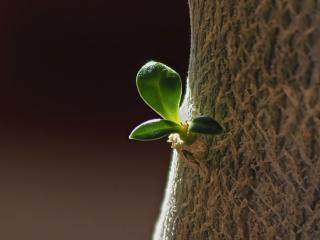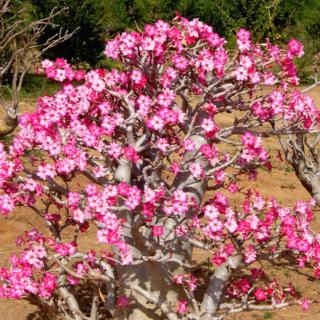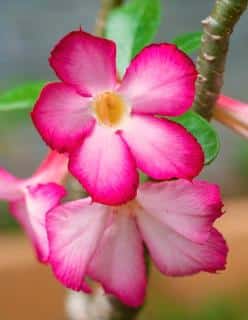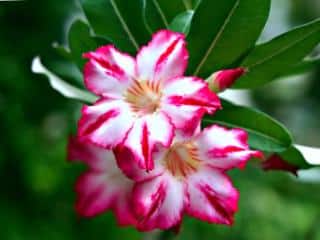

Adenium is a plant used indoors for its appealing blooming and its surprising ornamental qualities.
Adenium key facts:
Name – Adenium obesum
Family – Apocynceae or dogbane
Type – succulent perennial, indoor plant
Height – 5 feet (1.5 meters)
Exposure – full sun or well-lit
Soil – rather rich and well drained
Foliage: evergreen – Flowering: May to September
Caring for it requires careful watering and exposure to avoid disease.
 Indoors, this plant requires rather rich soil: best use a good soil mix.
Indoors, this plant requires rather rich soil: best use a good soil mix.
If you plan to plant your desert rose outdoors, wait for spring and choose a sunny spot.
They don’t need any pruning.
Remove wilted flowers regularly.
Like all succulent plants, a desert rose only requires very little water, since it stocks it up.
 Desert roses only require very little care.
Desert roses only require very little care.
Indoors, in an apartment, choose a very sunny location, in direct sunlight for the most part of the day.
You can put it outdoors in summer, but take care not to transfer it immediately to a scorching location. This could dry the plant up and brutal changes can stress it considerably.
 If you discover cottony white clumps, there is no doubt about it: scale insects. This parasite appears when the air in the room is too dry and the temperature is high.
If you discover cottony white clumps, there is no doubt about it: scale insects. This parasite appears when the air in the room is too dry and the temperature is high.
It may also happen that the desert rose starts rotting when the soil is too moist.
Only water when the soil is dry, and also check that your pot lets excess water drain out away from the roots. Soil must drain very well the pot should have holes at the bottom.
 Adenium obesum is certainly one of the most favored, thanks to its plump, luscious trunk and roots –nearly identical to Ficus ginseng, a famous house bonsai.
Adenium obesum is certainly one of the most favored, thanks to its plump, luscious trunk and roots –nearly identical to Ficus ginseng, a famous house bonsai.
This magnificent plant is also called baobab rose. It can bloom all year round when it gets older and is well cared for.